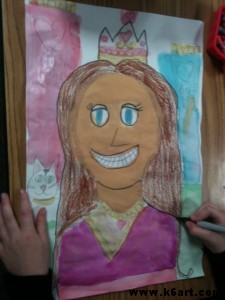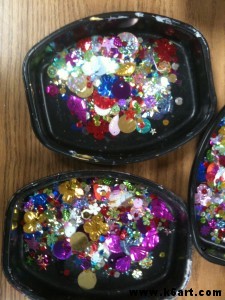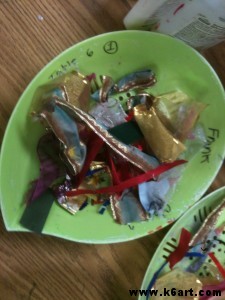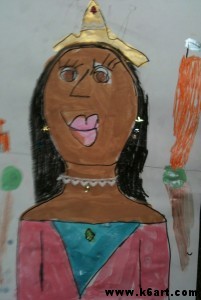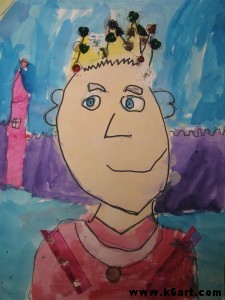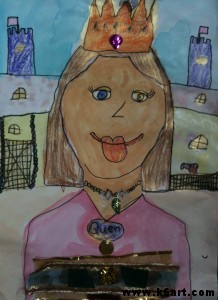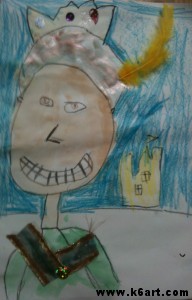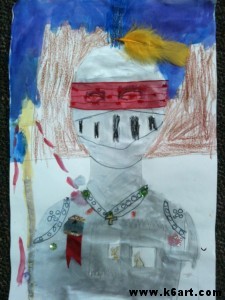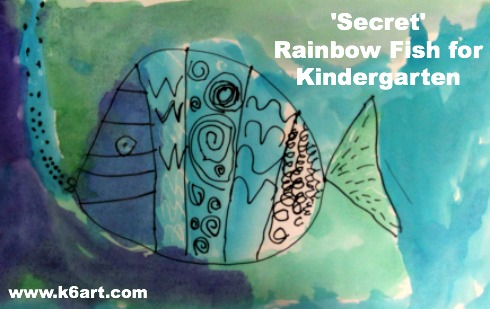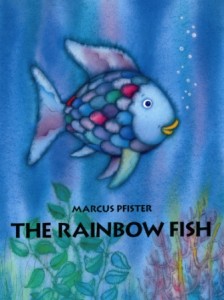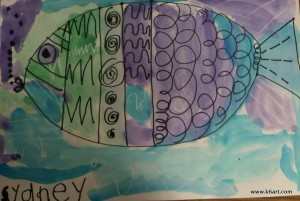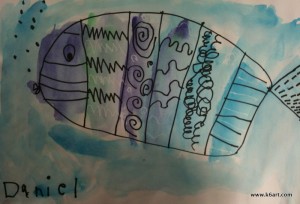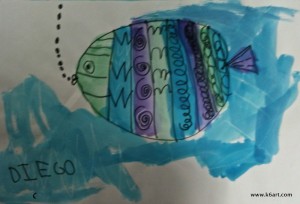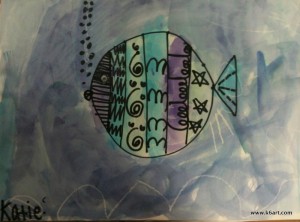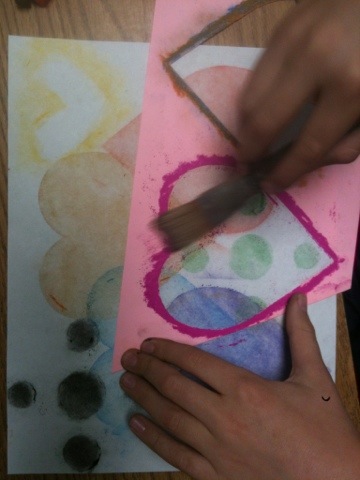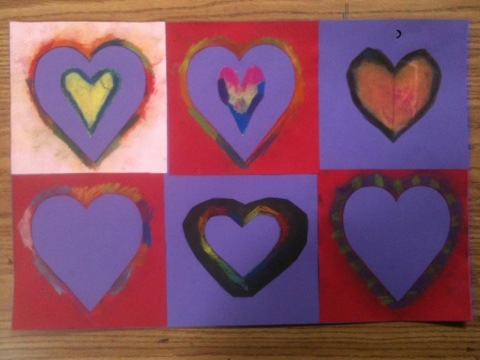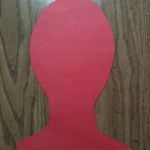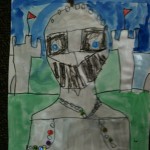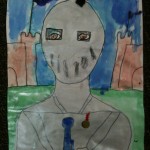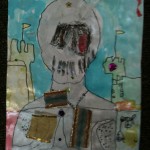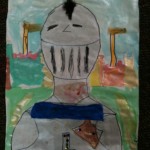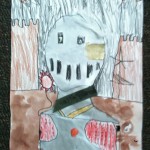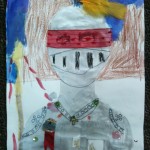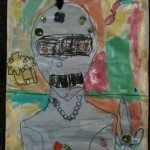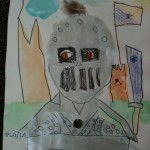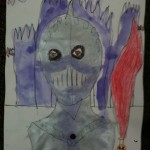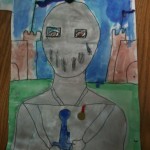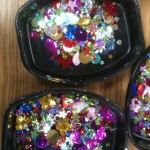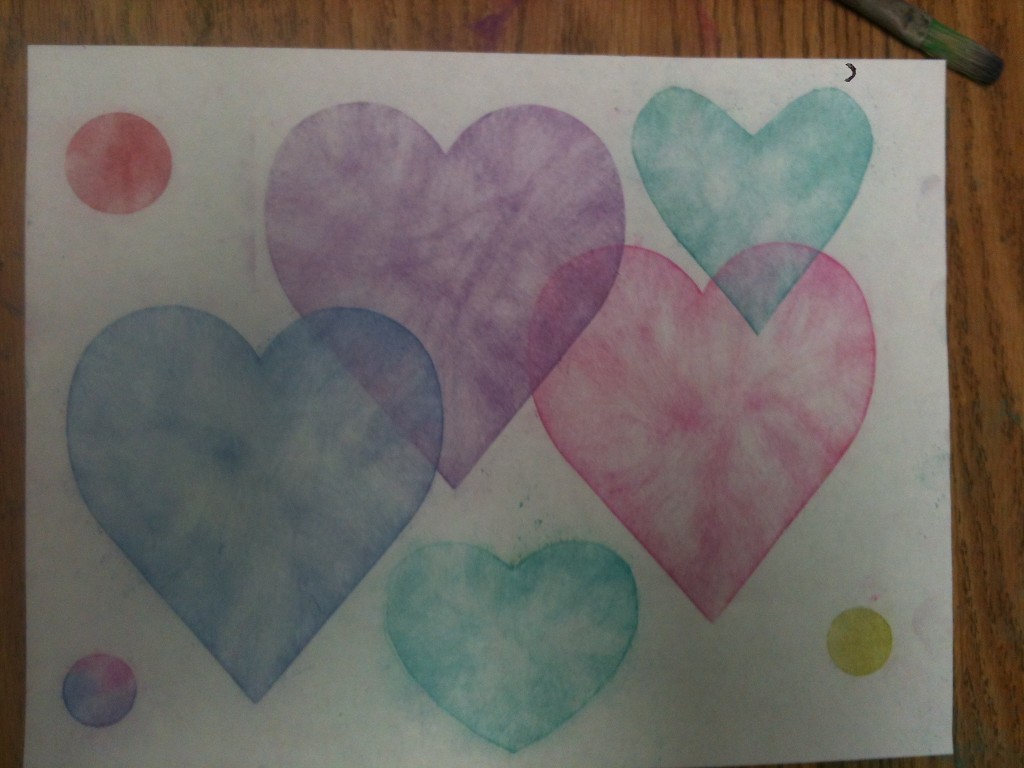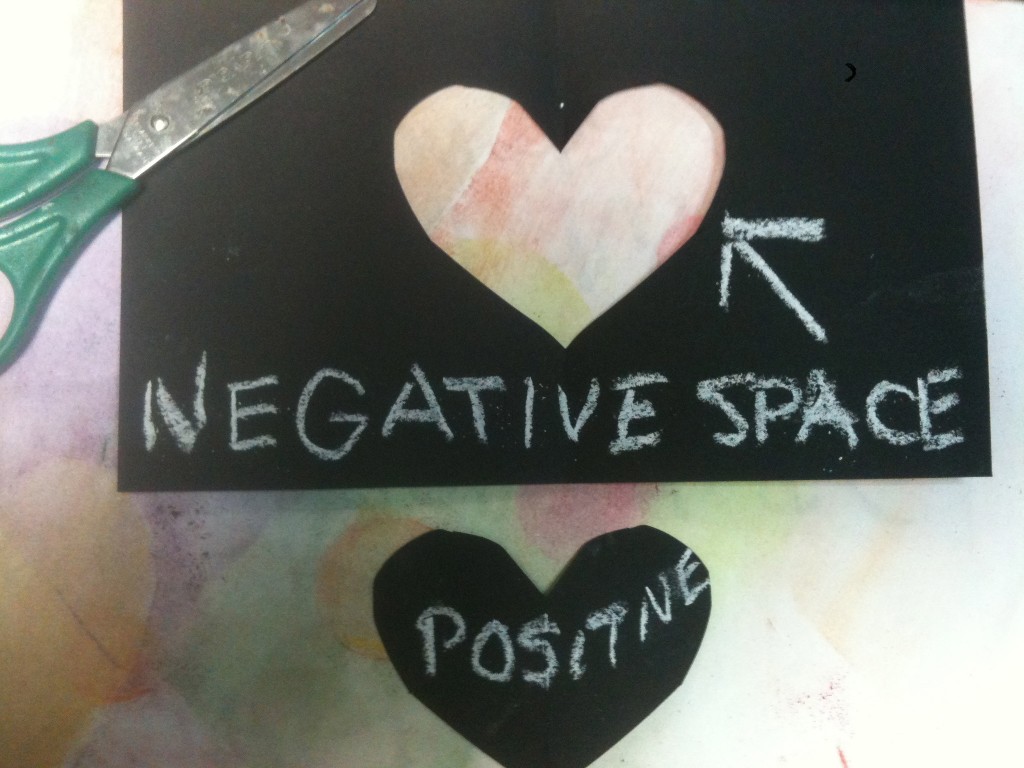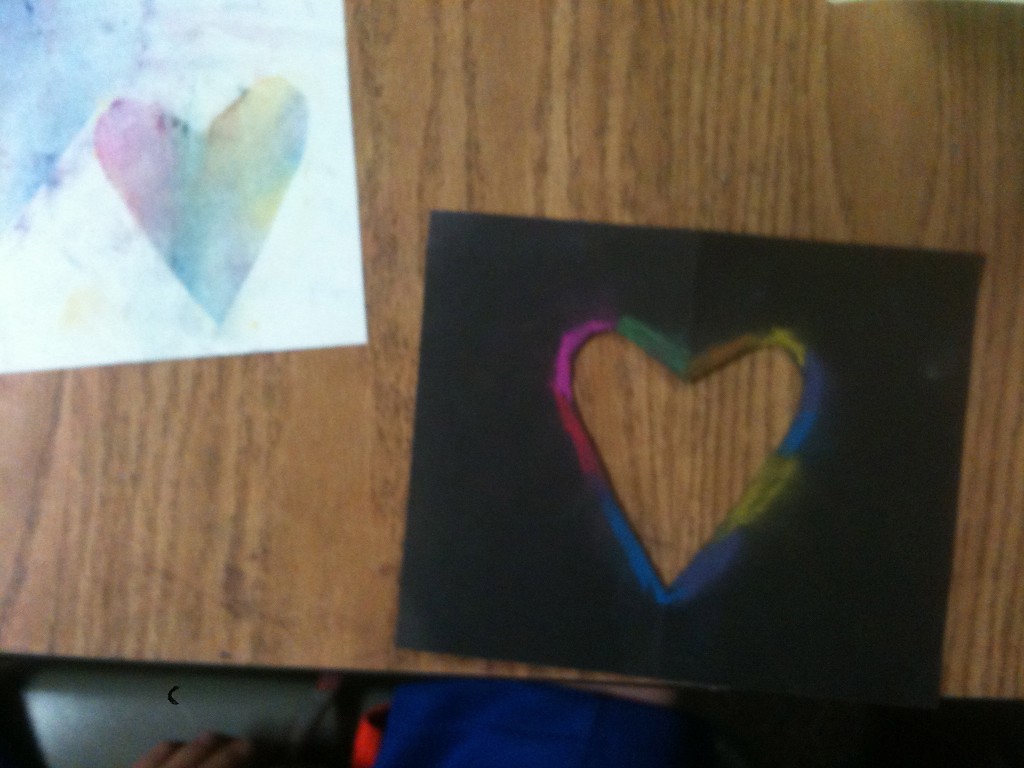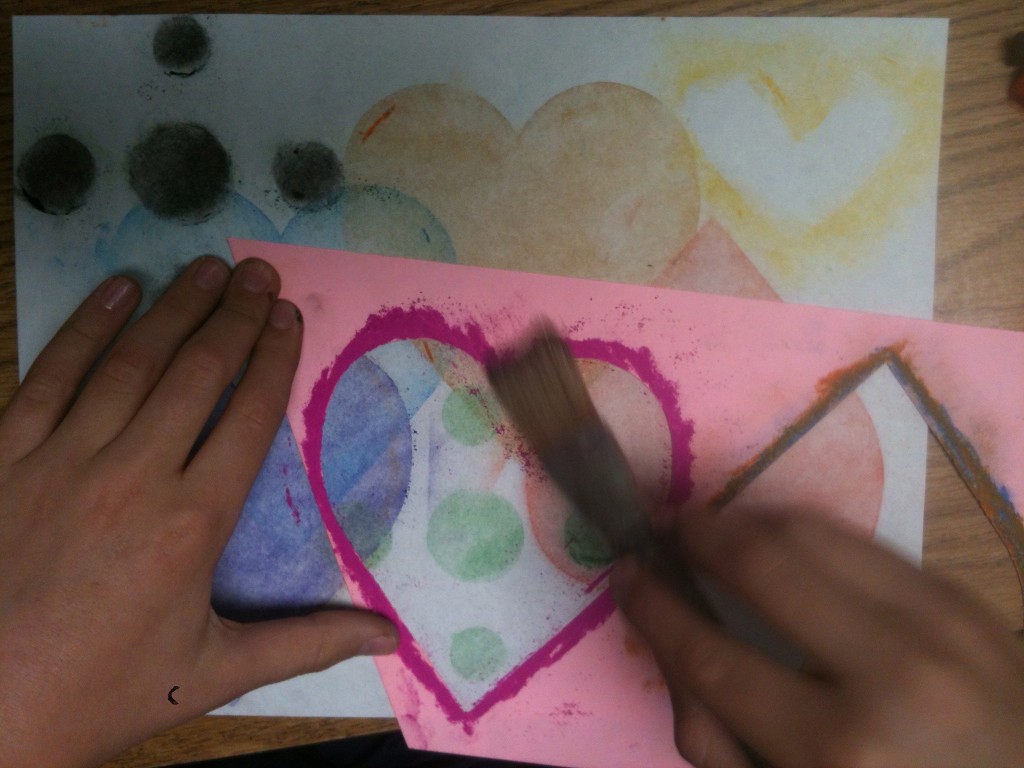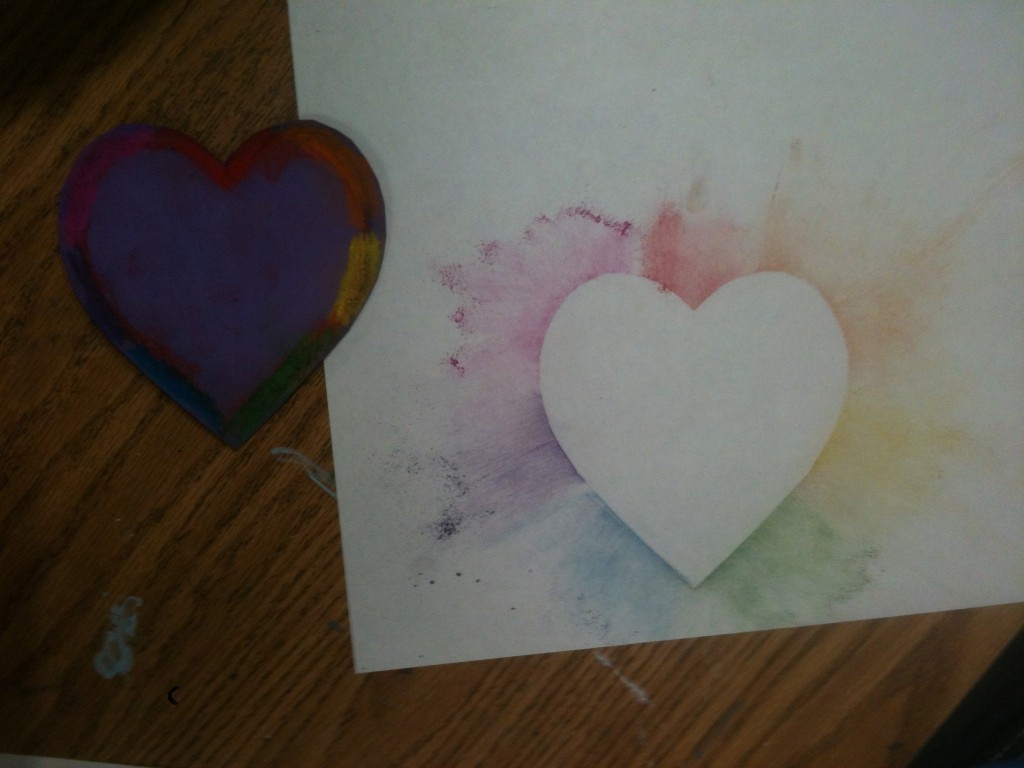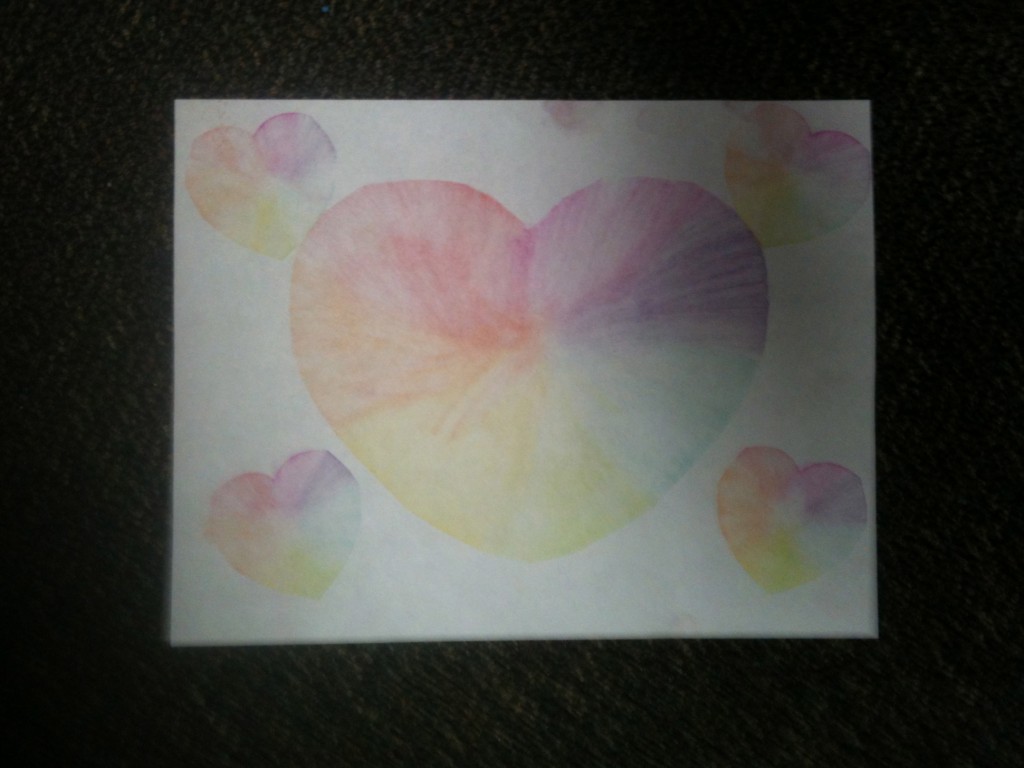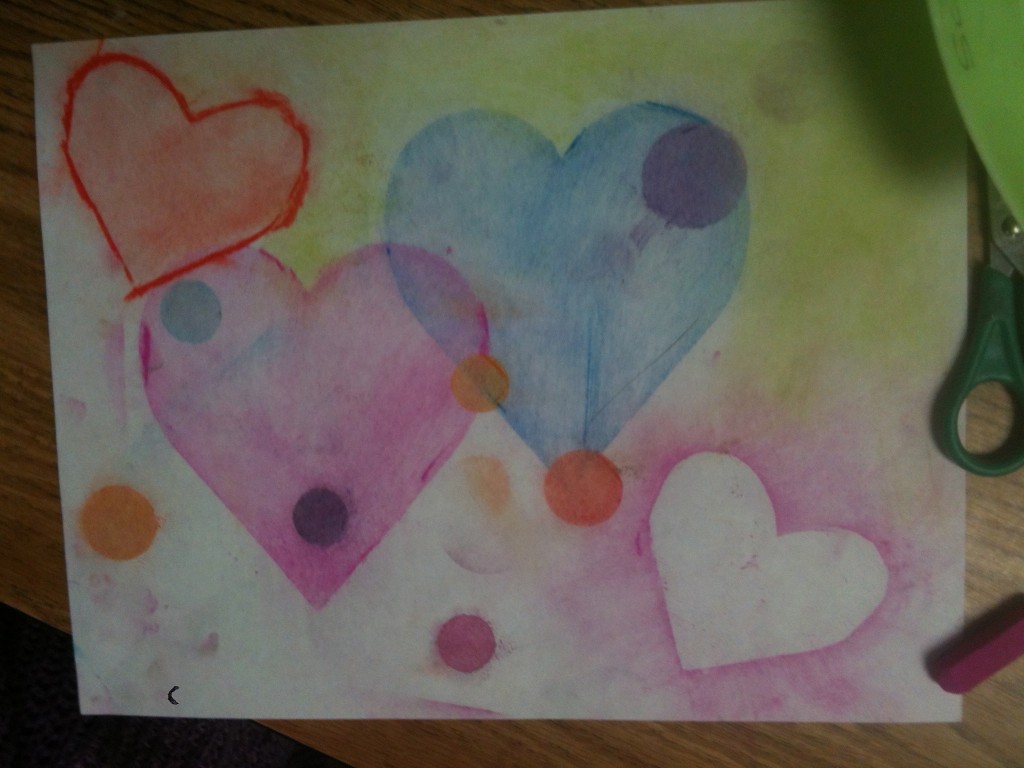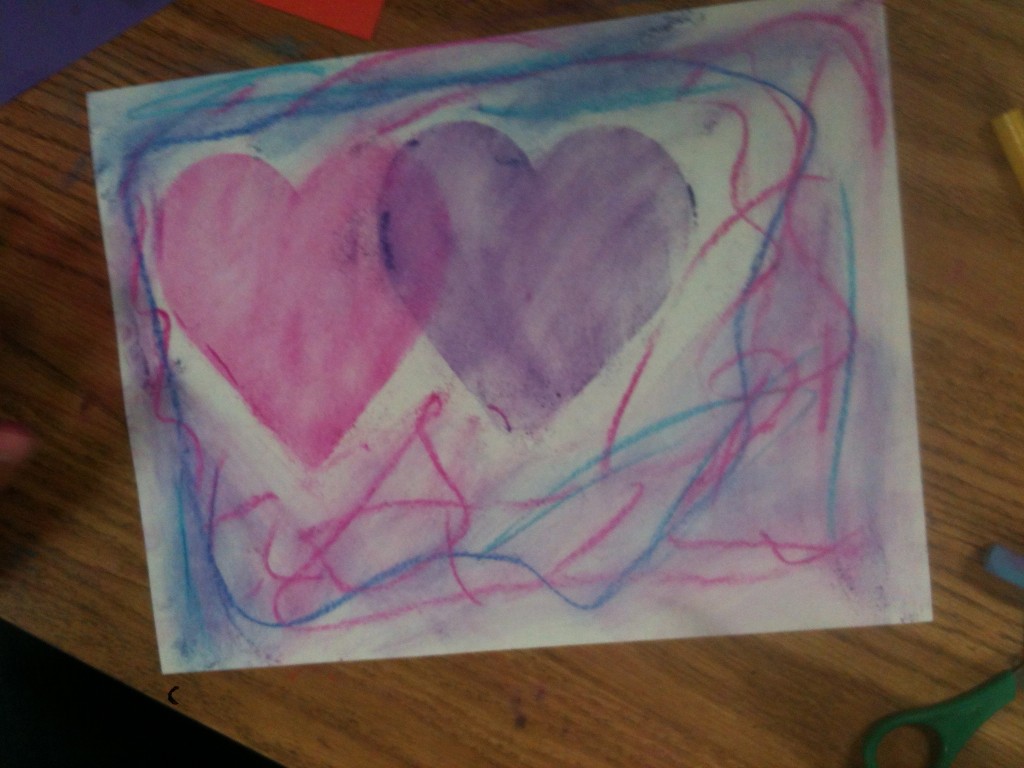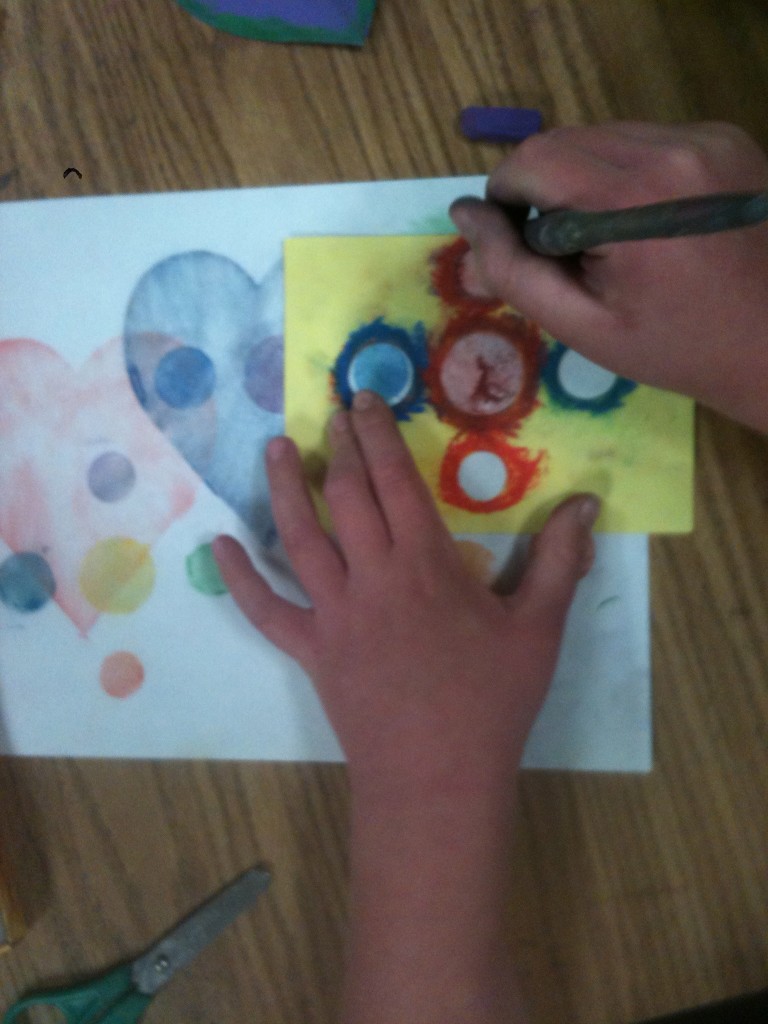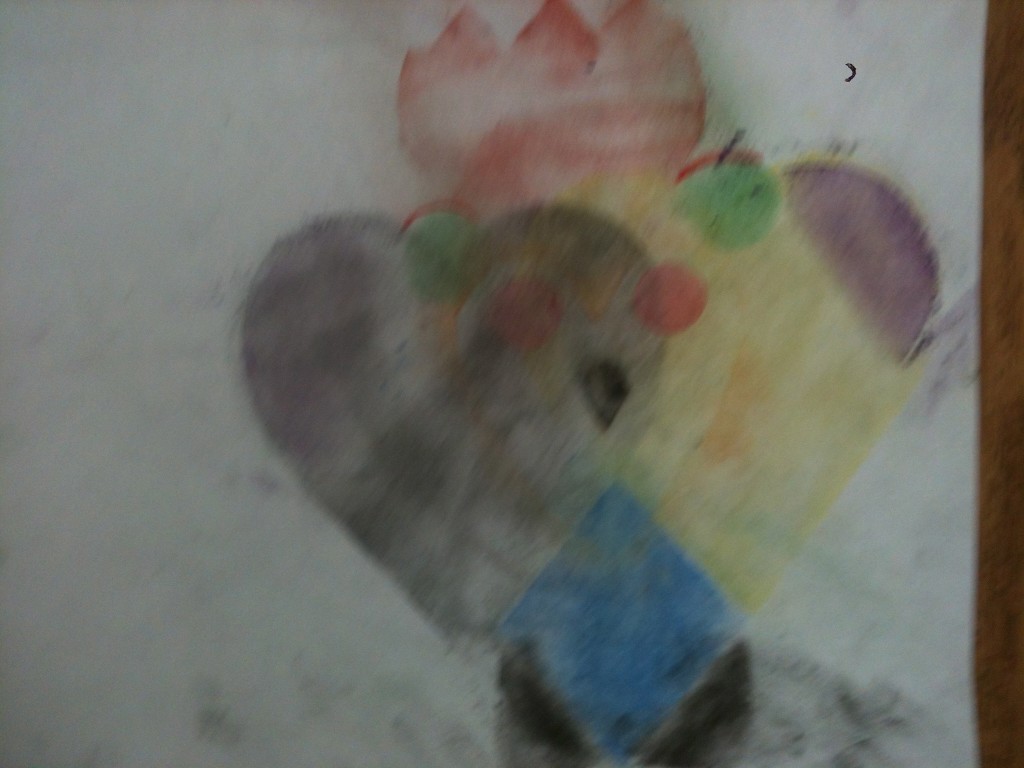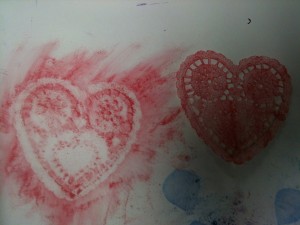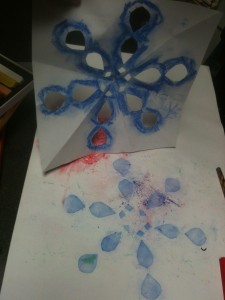Welcome to the royal art room! The first grade recently finished their royal self portraits.
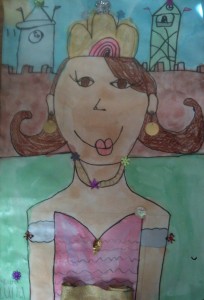
First graders create a portrait of themselves as princes or princesses. Allow 3-4 40-minute classes.
Materials:
- white paper, 12″x18″
- pencils and erasers
- self-portrait template (optional)
- several shades of skin-colored tempera (thinned with water)
- watercolors
- Sharpies
- crayons
- sequins, ribbons and lace
- glue
Day 1:
We started out by looking at photos of royal gear: crowns, swords, jewels, and medals. Students began by drawing the face, neck and torso. Then they added crowns and fine clothes. Most drew castles in the background – some even added their ‘royal’ pets!
Day 2:
The skin was painted with thinned tempera. We painted the rest with regular and metallic pan watercolors. Tiny details (such as eyes) were colored in with crayon.
Day 3:
The students outlined the dry art with Sharpies. ‘Jewels’ (sequins), ribbons and lace were glued on for a final touch.
And here are the fabulous results!
Some students chose to draw themselves as knights. I wrote about it in this post.
This completed our royal unit for first grade. Other projects in this unit are the watercolor resist castle and the clay dragon.
This lesson was inspired by an Arts Attack video.

